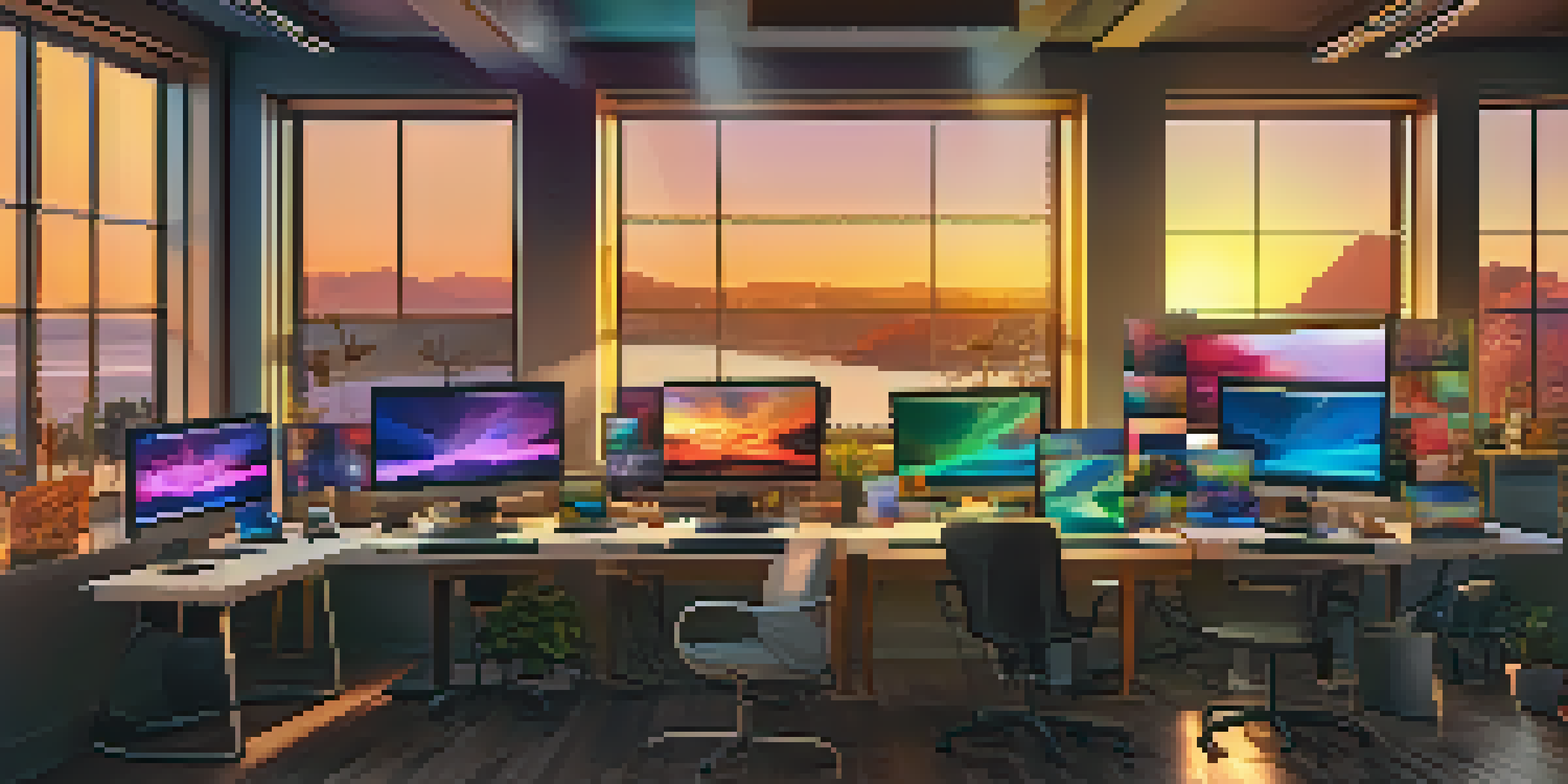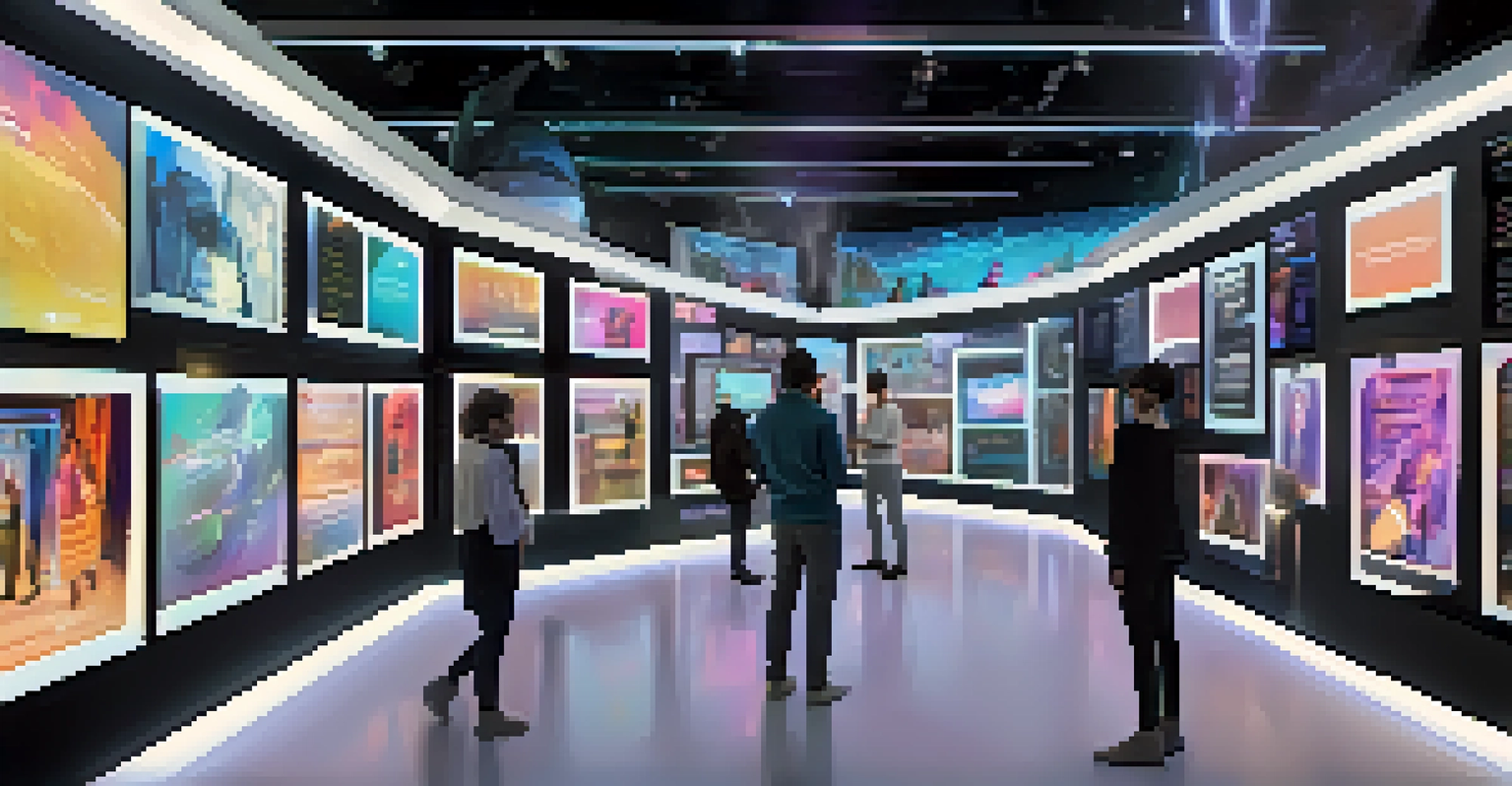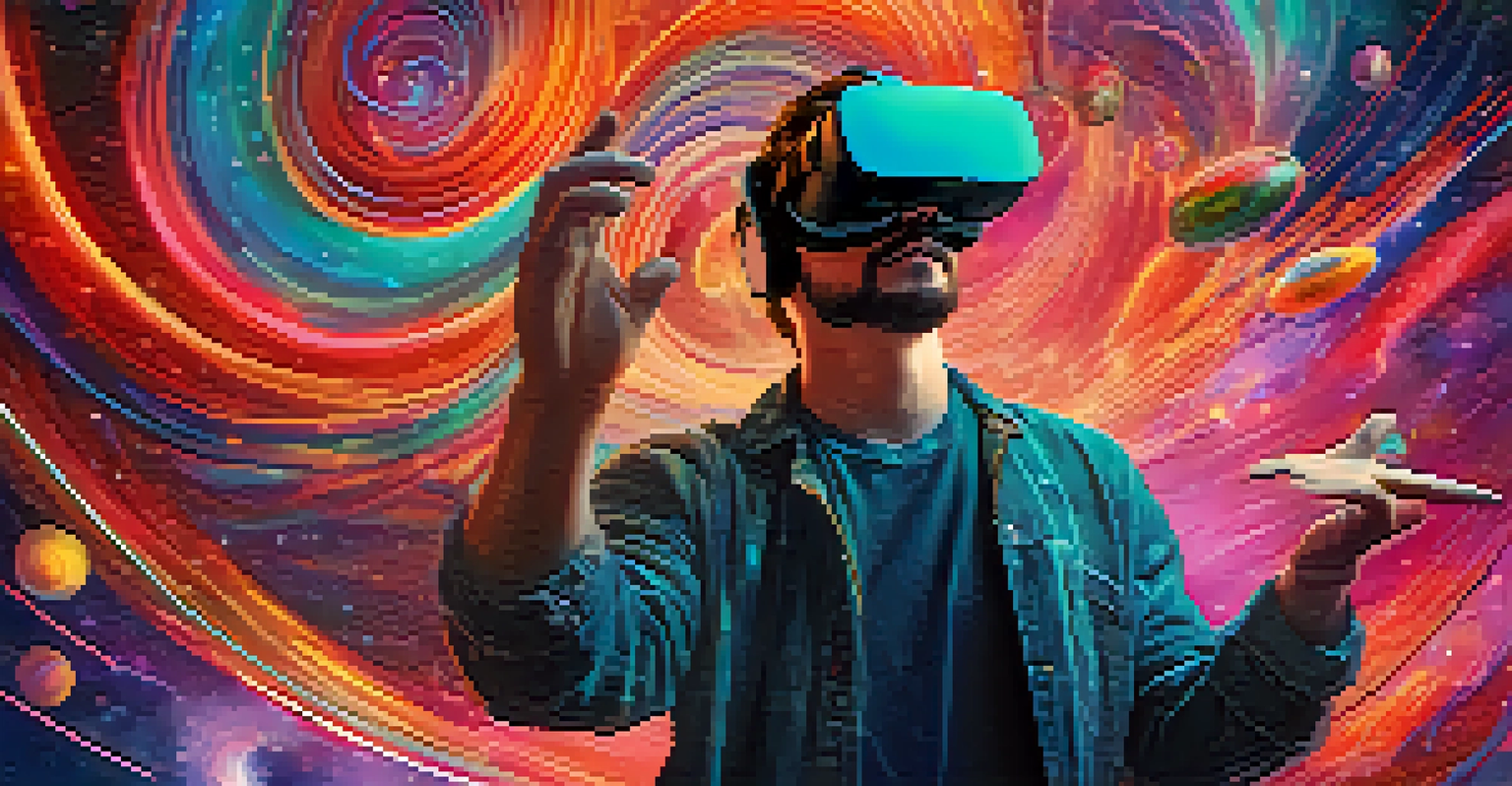Digital Art and NFTs: Revolutionizing Artistic Ownership

Understanding Digital Art: A New Medium for Creatives
Digital art refers to artwork created using digital technology, encompassing everything from illustrations to animations. Unlike traditional art forms, which often rely on physical materials, digital art thrives on software and hardware tools. This flexibility allows artists to experiment with styles and techniques that might be impossible in the physical realm.
Digital art is a medium that allows the artist to explore the possibilities of creativity without the limitations of traditional techniques.
Imagine a painter who can instantly change colors, undo mistakes, or try out different canvases without wasting any material. That’s the beauty of digital art—it empowers creators to push boundaries and explore innovative ideas without the constraints of traditional methods.
As technology continues to evolve, so does the definition of art itself. Digital artists are not just creators; they are pioneers, shaping the future of artistic expression and redefining what it means to be an artist in the modern world.
What are NFTs? A Primer on Non-Fungible Tokens
NFTs, or non-fungible tokens, are unique digital assets that represent ownership of a specific item or piece of content on the blockchain. Unlike cryptocurrencies like Bitcoin, which are interchangeable, each NFT is distinct and cannot be replicated. This uniqueness is what makes NFTs particularly appealing for artists and collectors alike.

Think of NFTs as digital certificates of authenticity. They provide verifiable proof of ownership and can include important details like the creator’s name and the history of the piece. This feature helps combat issues like forgery and establishes a clear lineage for digital artworks.
Digital Art Empowers Creatives
Digital art allows artists to experiment freely with styles and techniques, pushing the boundaries of traditional artistic expression.
As a result, NFTs have opened up new avenues for artists to monetize their work. By selling digital art as NFTs, creators can reach a global audience, ensuring that their art is valued and appreciated in a way that was previously challenging.
The Intersection of Digital Art and NFTs
The fusion of digital art and NFTs has created a vibrant marketplace where artists can showcase and sell their work directly to collectors. This direct engagement eliminates traditional gatekeepers like galleries and auction houses, enabling artists to retain a more significant portion of their earnings.
Non-fungible tokens are revolutionizing the way we think about ownership and authenticity in the digital age.
For collectors, NFTs offer a new way to invest in art. Owning an NFT is akin to possessing a rare collectible; it signifies ownership of a unique piece of digital art that can appreciate in value over time. This potential for investment brings a new level of excitement to the art world.
Moreover, the blockchain technology behind NFTs ensures that artists receive royalties on future sales. This means that every time an artwork changes hands, the original creator benefits, fostering a sustainable ecosystem that rewards artists for their creativity.
How NFTs are Changing Artistic Ownership
Before NFTs, the concept of ownership in the digital realm was murky. Artists often struggled with piracy and copyright issues, making it difficult to prove ownership or earn a living from their work. NFTs provide a clear solution by allowing artists to establish and maintain ownership of their creations.
Imagine an artist who can sell their work while still retaining some rights to it, similar to licensing a song for use in a movie. This shift empowers artists, giving them more control over how their art is used and distributed.
NFTs Redefine Art Ownership
NFTs provide a clear and verifiable way for artists to maintain ownership of their digital creations, transforming the landscape of artistic ownership.
In essence, NFTs are revolutionizing the notion of ownership. They are not just about buying and selling art; they are about creating a new relationship between artists and their audiences, where ownership and appreciation can coexist.
The Role of Marketplaces in the NFT Ecosystem
NFT marketplaces like OpenSea and Rarible have emerged as vital platforms for buying and selling digital art. These platforms allow artists to create, list, and sell their NFTs with ease, opening up the market to both seasoned collectors and newcomers alike.
Navigating these marketplaces can be likened to browsing a physical art gallery, where each listing showcases unique pieces waiting to be discovered. Artists can share their work with a global audience, fostering a sense of community around digital art.
Moreover, these marketplaces often include features that enhance the buying experience, such as virtual exhibitions and social functions. This interactive element adds a layer of engagement, allowing collectors to connect with artists and other enthusiasts.
Challenges and Criticisms of NFTs in Art
Despite their popularity, NFTs are not without controversy. Critics point to environmental concerns associated with blockchain technology, particularly regarding energy consumption. The process of minting NFTs can be resource-intensive, raising questions about sustainability in the art world.
Additionally, the NFT market has seen its fair share of scams and speculation, leading some to view it as a bubble waiting to burst. As the market evolves, artists and collectors must navigate these challenges to ensure they are making informed decisions.
Marketplaces Enhance Art Engagement
NFT marketplaces facilitate direct connections between artists and collectors, creating a vibrant community around digital art.
However, artists and platforms are actively seeking solutions, such as eco-friendly blockchain alternatives. By addressing these concerns, the art community can work towards a more sustainable and inclusive future for digital art and NFTs.
The Future of Digital Art and NFTs
As technology continues to advance, the future of digital art and NFTs looks promising. We may see even more innovative ways for artists to create and share their work, as well as new applications for NFTs beyond just art, including music and gaming.
Imagine a world where virtual reality galleries allow collectors to experience art in immersive environments or where digital collectibles can be seamlessly integrated into gaming experiences. The possibilities are endless, and the potential for growth is immense.

Ultimately, the combination of digital art and NFTs is shaping a new art landscape, one that embraces creativity and innovation while redefining ownership. This evolution invites everyone, from artists to collectors, to participate in a more dynamic and interconnected art world.